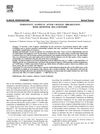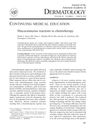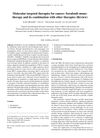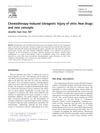Skin Toxicity of Anti-Cancer Therapy
October 2008
in “
Journal der Deutschen Dermatologischen Gesellschaft
”
alopecia chemotherapy radiation therapy targeted molecular agents dacarbazine photosensitivity thiotepa hyperpigmentation hand-foot syndrome frozen glove docetaxel radiotherapy erythema imatinib sorafenib exanthems EGFR antagonists acneiform exanthems dry skin hair loss skin reactions skin changes nail damage skin side effects
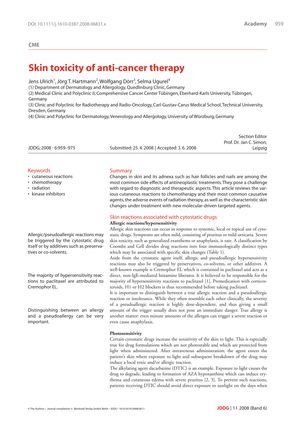
TLDR Anti-cancer treatments can cause reversible hair loss, skin sensitivity, pigmentation changes, nail damage, and skin reactions, with a need for more research on managing these side effects.
The document from 2008 reviewed skin toxicities caused by anti-cancer therapies, including chemotherapy, radiation therapy, and targeted molecular agents. It detailed the side effects on skin and adnexa, such as hair follicles and nails, noting that alopecia is a common and distressing side effect of chemotherapy, generally reversible but potentially altering hair color or texture. Skin reactions to drugs like dacarbazine can cause photosensitivity, while thiotepa may lead to hyperpigmentation. Nail changes and hand-foot syndrome are also noted side effects, with a small study of 45 patients showing that a frozen glove can reduce nail damage during docetaxel treatment. Radiotherapy can cause erythema and chronic skin changes, with no known treatment for effects on skin adnexa. Targeted therapies like imatinib and sorafenib can cause skin reactions such as exanthems and hand-foot syndrome, with the severity increasing with higher doses. EGFR antagonists frequently cause acneiform exanthems and dry skin. The document underscores the need for further research into prevention and treatment of these dermatologic side effects to help patients continue their anti-cancer therapies.
